
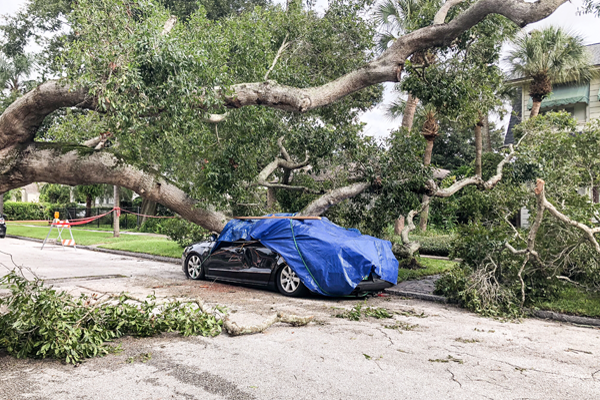
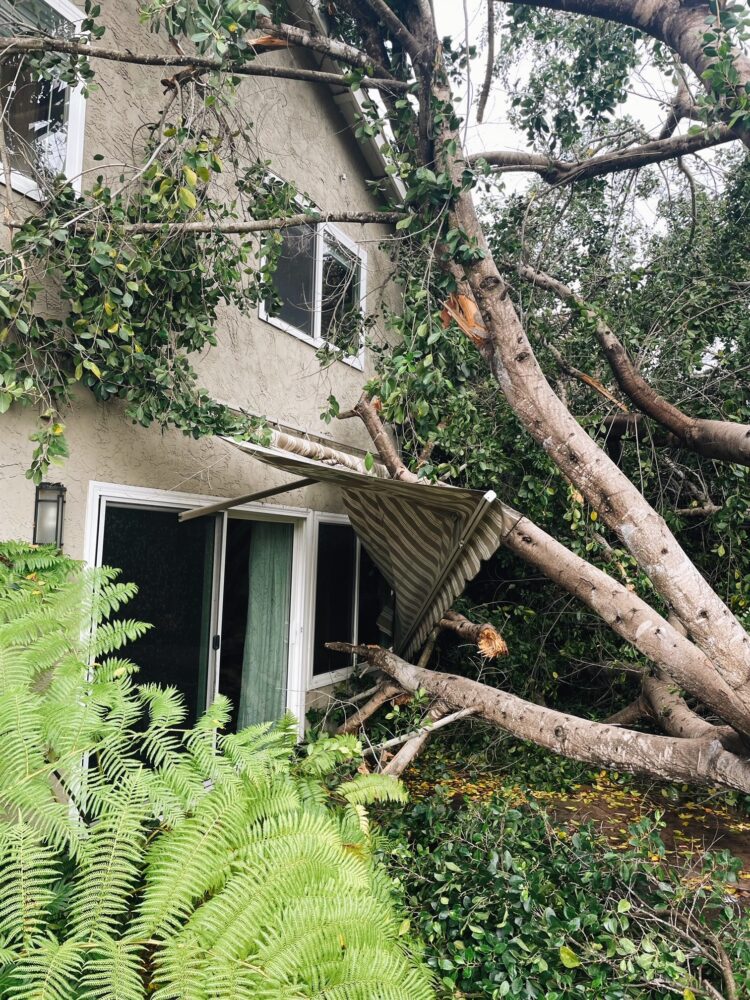
In the winter, the residents of San Diego (with the exception of those in our local mountains) may not have to worry about about being snowed in or about driving on icy roads. But with the winter season, comes the strong problematic wind gusts. It doesn’t even take wind speeds that are anywhere close to hurricane levels to cause damage. When those infrequent storms hit our city, trees start falling on homes, roads, cars, and tragically, even on nearby bystanders. It can easily be a life-threatening disaster, so steps should be taken to help reduce the risk. But what makes a tree more likely to fail than others?
Tree failures are not necessarily random in nature, especially in the urban setting. Given the optimal growth conditions, even the largest trees with full canopies are to withstand heavy rain and powerful winds. However, with the nature of tree development in an arid climate such as in San Diego, wind gusts of less than 30 mpg surprisingly have the ability to push trees over. In fact, when wind speeds hit 50 mpg in January of 2023, that was just overkill for many of our local trees! Dozens of trees fell around San Diego, including 35 that fell in Balboa Park.
San Diego News
In early 2023, LC Tree Service was contracted by the homeowner to remove this large fallen tree in Lakeside, California.
In forest regions, such as the Sequoia National Park in Northern California, the towering pine trees that reach up to 275 feet towards the clouds are securely fastened to the ground. This is due to three primary conditions: 1) they receive an adequate amount of water and nutrients to feed their roots, 2) they have plenty of fertile soil to grow their roots, and 3) they are in a symbiotic network with other trees that work together to feed and protect each other.
On the contrary, in urban settings, trees can very be limited in the three primary factors that allow forest trees to thrive and remain intact even in extremely windy situations.
Why are urban trees more prone to fall?
Lack of Water + Nutrients
An adequate amount of water, along with nutrient-rich soil, encourages the root system of a tree to spread. The roots are like foragers, and their job is to search for food and water. In San Diego, natural water supplies (i.e. rain, freshwater streams) are very limited, so trees tend to depend on manually-supplied water or irrigation systems.
Property owners also unknowingly add to the problem by their watering technique. If you have watered a tree, you are probably guilty of it—watering too close to the trunk! When a young tree is first transplanted, then yes, it makes sense to water around the base of the tree because the roots have yet to take off into their new territory. However, once a tree has transitioned, its roots do their job of spreading, and they continue to spread even past the canopy. So to encourage roots to keep foraging the land for water and nutrients, well, water and nutrients need to be found. Otherwise, they stay close to the “mothership” if that is the only area worth staying.
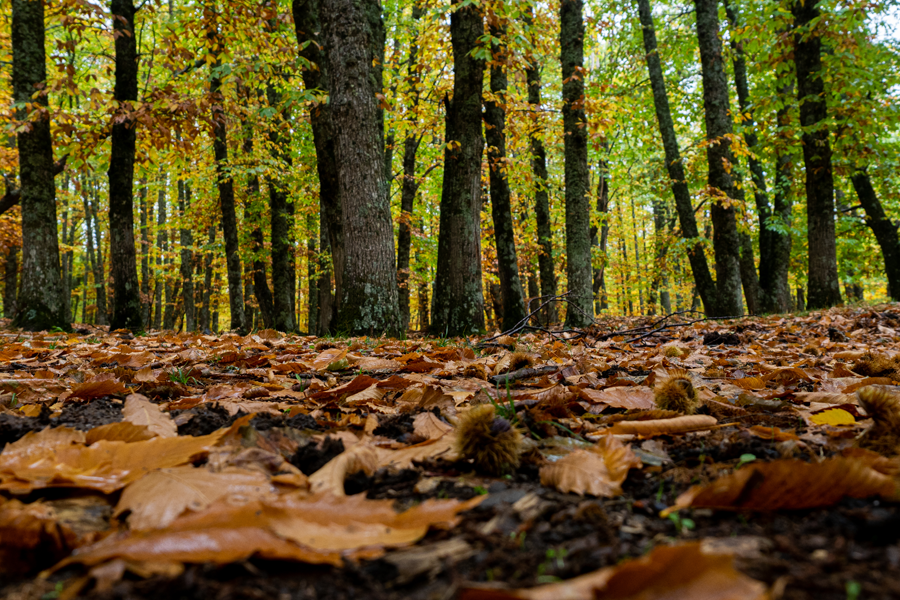
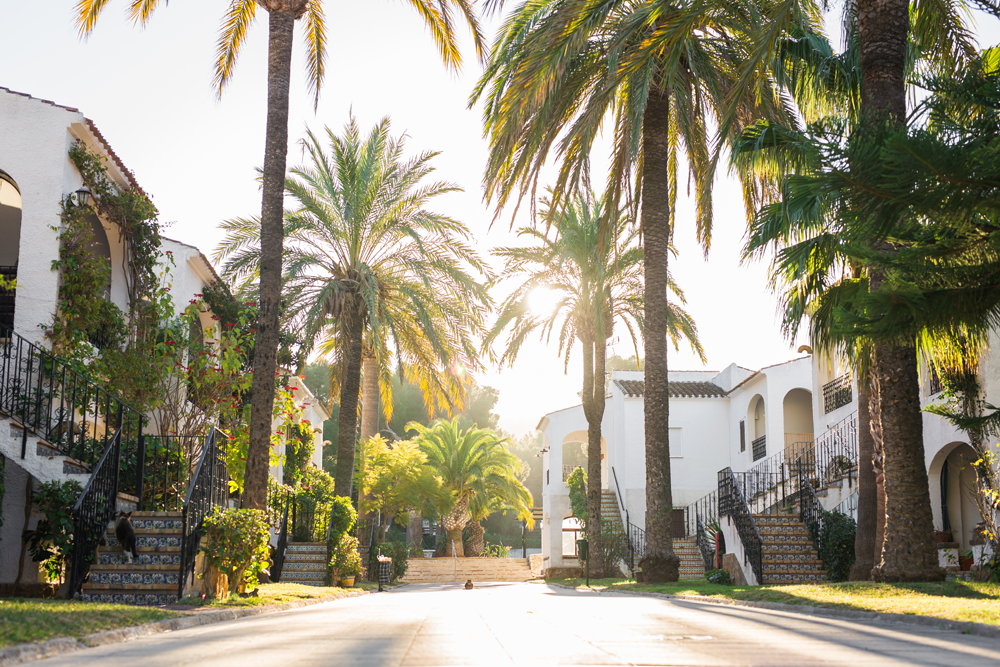
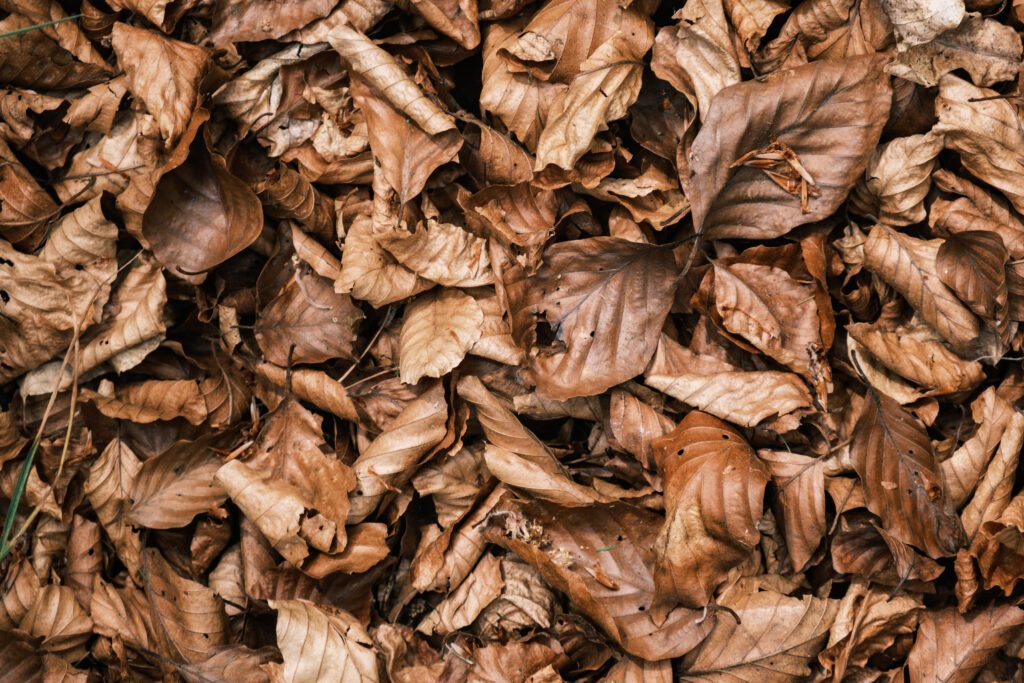
Not only does soil in San Diego tend to be dry, but it also lacks an abundance of nutrients compared to forested areas or any undeveloped ground that is lush with plant life. Forest soil is part of a beautifully well-made cycle that allows nutrients to be consumed and then naturally replenished by decomposing matter. If you think about forests, or even landscape areas around the city where fallen leaves are allowed to accumulate, that thick layer that your foot sinks into is breaking down to form a nutrient-packed layer of the soil called humus—a Latin word meaning earth or ground. As the leaves and other organic matter continually break down, they feed the tree (typically the one that they just came from) with exactly what it needs.
However, property owners typically prefer a well-kept appearance around their trees and garden beds, so dead leaves get raked up and tossed away. This leaves the ground devoid of what the tree needs for optimal health because while the tree and other plant life are continually absorbing nutrients, that constant replenishment of nutrients is lacking—unless the property owner or gardener is on top of regular fertilizer applications.
Lack of Growth Room
Next time you are driving through the neighborhoods and commercial areas of San Diego, look at the large trees that are nestled next to buildings, homes, and streets. What typically surrounds them? Concrete. Asphalt. Some sort of hardscape.
Sometimes trees are given a nice little yard to grow in, however it’s a common sight to see massive trees growing in a slim parkway strip that is sandwiched in between a sidewalk and the road. Or you’ll find these large trees almost pressed up against an apartment building or other structure—once again wedged in between concrete. Many times, construction is performed around an already-mature tree, and important supporting roots are damaged in the process, therefore compromising the tree’s stability.
Roots are the anchor for trees. The larger the tree, the larger the root system should be. For example, anything top-heavy, whether be it a bookshelf or your child’s block tower, is in greater danger of toppling over. The same rule applies to trees, especially towering ones with a full canopy. This is why it is important to consider the growth capabilities that a tree has when adding one to your landscaping. A Torrey pine or eucalyptus tree in your front yard or anywhere on your property is definitely not a good idea! When large tree species, such as a Torrey pine that can grow over 100 feet tall with a trunk circumference of over 20 feet, is not given enough growth room for its roots, it becomes an unstable situation, especially when they are located on a residential property or any area with heavy traffic. You never know when tree failure (branches breaking off or the tree falling over) may occur.
The root systems of large trees in undeveloped areas are not limited by hardscape. If there is a plethora a fertile, open space to venture into, then the roots will generally grow 1.5 times the width of the tree’s canopy, or even more. So a 100-foot tree should have a root system that is 150-foot wide. However, when we encounter fallen trees around San Diego, their roots have usually been comprised by one or more factors such as limited growth room. But other factors can also include disease and root rot.



Lack of a Tree Network
Another reason why forest trees are able to withstand heavy wind gusts is due to their tree network or “family.” Groves of trees benefit one another in ways that most people are not aware of. It’s a beautifully created system where these trees share nutrients and protect each other—because as the saying goes, “There’s safety in numbers.”
Have you ever noticed a mature tree in the forest that is surrounded by little tree saplings (babies)? Even when some of these saplings grow in low-light conditions in the shade of the taller trees, they are able to thrive because the older trees or “mother trees” help to feed the young. This is possible due to what’s called the common mycelial network (CMN), which is possible due to the mycorrhizal fungi that connects the roots of different trees together underground. Not only are trees able to share nutrients through this network, but they are also known to communicate and send each other warnings of incoming threats.
Aside from providing stability in the form of sharing nutrients and warnings, root systems also provide “muscular” stability. Remember playing the game Red Rover in elementary school. “Red rover, red rover, send David right over.” Then little David would run toward a line of classmates interlocking arms to try to break it. Sometimes a child would succeed, but sometime he/she would bounce back if there wasn’t enough force to tear through the chain of arms. In a similar manner, when trees grow in groves, they interlock “arms” underground. However, unlike the delicate arms of a group of 8-year old school children, the intertwining roots of trees make them almost impenetrable to wind gusts.
The interlocking root systems of forest trees
In these symbiotic networks, forest trees help feed and protect one another.
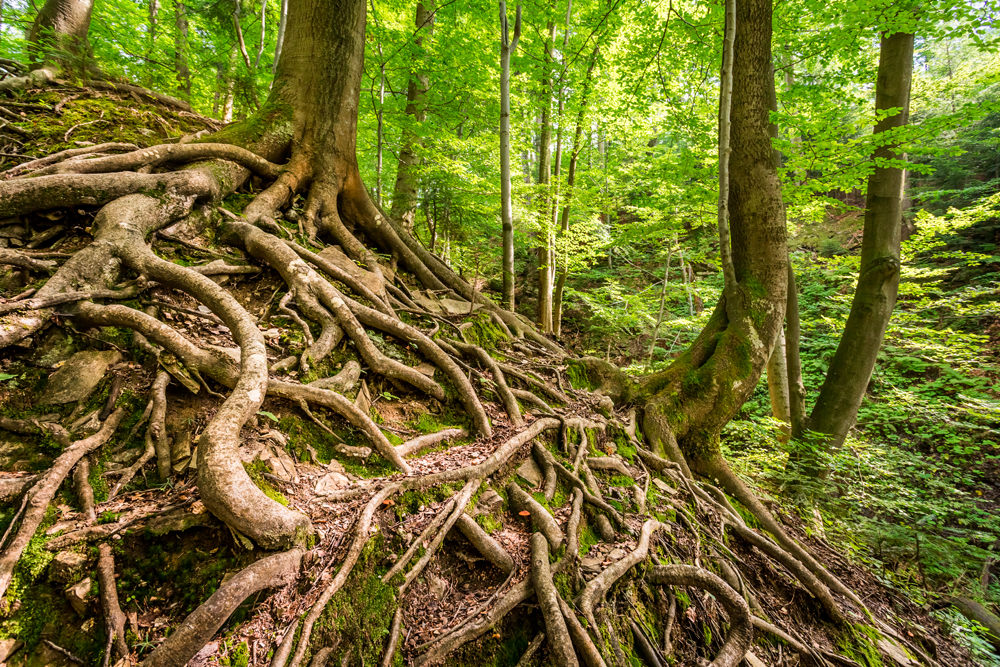
But wait, there’s more to trees going in groves! When heavy storms hit, the trees located along the perimeter of the group take the brunt of the wind forces—and in doing so, they help to shield the inward trees. If you have ever watched an animal documentary on Emperor penguins, it is similar to how they squeeze together into a tight unit during a harsh winter storm. The penguins on the outside help to protect rest of the group from the elements by using their bodies as shields.
So when it comes to the urban trees that we have in San Diego, they typically lack the benefits of living in a family of other trees. Often, trees stand all alone on their property, especially towering ones. When was the last time you saw a home in San Diego with several 100-foot pine trees? It’s probably non-existent in our suburban or urban neighborhoods. But if trees do have woody neighbors, then they are usually a distance away, or they live in a very small group.
What steps can be taken to prevent tree failure?
Does this mean that San Diego residents should not enjoy the wonderful sight of large trees throughout the city? No, but we advise property owners to be wise about the tree species that they have on their property and that proper care is taken to help their trees remain stable. Before adding a tree to your property, it is a good idea to do your research on their size and durability. Some trees are more prone to breakage than others. Some are even more likely to topple over than others. Also, as the decades pass, is the size of that tree going to be an issue?
If you already have a large, mature tree that you want to keep on your property, then the best steps to take are to have it regularly trimmed and inspected for signs of decline.
Unfortunately, as much as we love trees at LC Tree Service, some trees are just too MASSIVE for their given area and “too close for comfort” to structures and/or high traffic areas. In cases such as these, to prevent possible life-threatening hazards, we recommend removing the the tree because it’s better to be safe than sorry.


